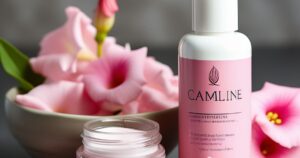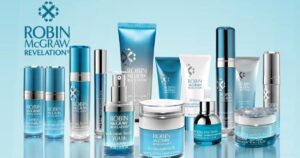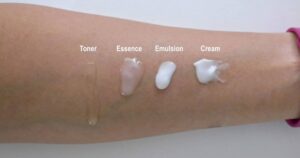In a world where flawless skin is coveted and beauty trends are ever-evolving, starting your own skin care line can be a lucrative and fulfilling venture. But amidst the crowded marketplace, how can you stand out and make your mark? This article will guide you through the intricacies of launching a successful skin care line, from understanding the industry and defining your target market, to formulating effective products and navigating legal requirements. Get ready to embark on a journey of entrepreneurship and create a brand that resonates with your audience.
Key Takeaways
- Conduct thorough market research to understand skincare trends, competition, and target demographics
- Develop a unique brand strategy that aligns with your vision and values to differentiate your skincare line in the market
- Source high-quality ingredients and collaborate with experienced formulators to create effective skincare products
- Ensure compliance with legal and regulatory requirements, including product labeling laws, ingredient restrictions, and Good Manufacturing Practices (GMP)
Understanding the Skin care Industry
The understanding of the skin care industry is crucial for entrepreneurs looking to start a successful skin care line. In order to navigate this competitive market, it is important to stay informed about the latest skin care trends and conduct a thorough competition analysis. Skin care trends are constantly evolving, driven by consumer demands and advancements in technology. Entrepreneurs must stay updated on popular ingredients, formulations, and techniques to develop products that cater to the ever-changing needs of their target audience. Additionally, conducting a competition analysis helps in identifying key players in the market, understanding their product offerings, pricing strategies, and marketing tactics. This analysis provides valuable insights that can be used to differentiate one’s own brand and create a unique selling proposition. By staying informed and analyzing the competition, entrepreneurs can position their skin care line for success in the dynamic skin care industry.
Defining Your Target Market
When defining your target market, it is crucial to understand the demographics, preferences, and behaviors of your potential customers. Conducting thorough market research and customer profiling allows you to identify and segment your target audience effectively. Here are some key steps to consider:
- Conduct market research: Gather data on market trends, industry competition, and customer needs and preferences.
- Identify demographics: Determine the demographic characteristics of your target market, such as age, gender, income level, and geographic location.
- Analyze preferences: Understand the specific needs, desires, and preferences of your target customers regarding skin care products.
- Study behaviors: Examine purchasing habits, influencers, and decision-making processes of your target market.
Developing Your Brand Identity
An effective brand identity is essential for establishing a strong and memorable image for your skin care line. It involves the strategic positioning and differentiation of your brand in the market. Brand positioning refers to the unique space your brand occupies in the minds of your target audience. This could be based on factors such as quality, affordability, or eco-friendliness. On the other hand, brand differentiation is about setting your skin care line apart from competitors by highlighting its unique features and benefits. To develop a compelling brand identity, you need to understand your target market and their needs, conduct market research to identify gaps and opportunities, and create a brand strategy that aligns with your vision and values. The table below provides an example of how brand positioning and differentiation can be applied to a skin care line:
| Brand Positioning | Brand Differentiation |
|---|---|
| Affordable | Natural ingredients |
| Luxury | Anti-aging properties |
| Organic | Dermatologist approved |
Formulating Effective Skincare Products
To create high-quality skin care products, it is crucial to carefully select and combine active ingredients that have been scientifically proven to improve skin health and address specific skincare concerns. Here are some key considerations for formulating effective skincare products:
- Product Testing: Conduct thorough testing of the product to ensure its safety, stability, and efficacy. This includes clinical trials, consumer testing, and compatibility testing with other ingredients.
- Ingredient Sourcing: Source ingredients from reputable suppliers who adhere to strict quality standards. Consider organic, natural, and sustainable options to meet the growing demand for environmentally-friendly skincare products.
- Active Ingredient Combinations: Combine active ingredients that complement each other and target multiple skin concerns. This can include antioxidants, peptides, hyaluronic acid, and retinoids, among others.
- Formulation Expertise: Collaborate with experienced formulators who understand the science behind skincare ingredients and can create formulations that deliver optimal results.
Navigating Legal and Regulatory Requirements
In order to comply with legal and regulatory requirements, skincare brands must thoroughly research and understand the laws and regulations regarding product labeling, ingredient restrictions, and claims substantiation. This ensures that their products meet the necessary standards and do not pose any risks to consumers. Legal compliance is crucial in the skincare industry as it helps to build trust and credibility with customers, while also safeguarding their health and well-being. Additionally, licensing requirements must be met to ensure that the brand is operating within the boundaries of the law. Failure to comply with these regulations can result in severe penalties and damage to the brand’s reputation. The following table provides an overview of some key legal and regulatory requirements that skincare brands need to be aware of:
| Legal Compliance | Licensing Requirements |
|---|---|
| Product Labeling | Business License |
| Ingredient Restrictions | Manufacturing License |
| Claims Substantiation | Product Registration |
| Good Manufacturing Practices (GMP) | Import/Export License |
Creating a Marketing Strategy
Creating a marketing strategy is an essential step in successfully promoting a skin care line. It involves identifying the target audience, selecting the most effective marketing channels, and allocating the marketing budget. By carefully considering these points, a company can develop a strategic and focused approach to reach and engage potential customers, ultimately driving sales and brand awareness.
Target Audience Identification
Identifying the target audience is essential for developing an effective marketing strategy for a skin care line. Conducting target audience research and analyzing consumer behavior are crucial steps in this process. By understanding the needs, preferences, and behaviors of the target audience, skin care brands can tailor their products and marketing messages to resonate with their customers.
To successfully identify the target audience, skin care brands can employ various research methods, such as surveys, focus groups, and data analysis. This allows them to gather insights on demographic information, psychographics, and purchasing behavior.
Key benefits of target audience research and consumer behavior analysis include:
- Better understanding of customer needs and preferences
- Crafting targeted marketing messages
- Developing products that meet customer demands
- Enhancing customer loyalty and satisfaction
Channel Selection
Effective channel selection is crucial for ensuring that a skin care brand’s marketing strategy reaches its target audience through the most suitable channels. Conducting thorough market research and channel analysis is essential in determining which channels will provide the best opportunities for reaching and engaging with the target audience. By analyzing factors such as demographics, customer preferences, and competitor presence, a brand can identify the most effective channels for promoting its products. To illustrate the importance of channel selection, consider the following table:
| Channel | Target Audience |
|---|---|
| Social Media | Millennials |
| Beauty Influencers | Gen Z |
| Online Retailers | Busy Professionals |
| Beauty Magazines | Women 25-45 |
| Skincare Clinics | Luxury Consumers |
Through market research and channel analysis, a skin care brand can make informed decisions regarding which channels to prioritize in its marketing strategy. By selecting the most suitable channels, a brand can effectively reach its target audience and maximize its marketing efforts.
Budget Allocation
In order to optimize our marketing strategy, we need to carefully allocate our budget and ensure that it aligns with our goals and target audience. Budget planning and cost analysis play a crucial role in this process. Here are some key considerations to keep in mind:
- Conduct a thorough cost analysis: Evaluate the costs associated with different marketing channels, campaigns, and initiatives. Identify the most effective and cost-efficient ones.
- Prioritize high-impact activities: Allocate a larger portion of the budget to initiatives that have the potential to generate significant returns and reach your target audience effectively.
- Continuously monitor and adjust: Regularly review the performance of your marketing activities and make adjustments as needed. This will help you optimize your budget allocation and ensure that you are making the most of your resources.
- Consider experimentation: Allocate a small portion of your budget to test new marketing strategies or channels. This will enable you to explore new opportunities and gather valuable data for future planning.
Launching and Growing Your Skin care Line
Launching and growing a skin care line requires a strategic approach to marketing, focusing on strategies for growth, product development, and innovation. By identifying target markets and consumer preferences, brands can tailor their products to meet specific needs and stand out in a saturated market. Additionally, investing in research and development can lead to the creation of new and unique skincare formulations that differentiate the brand and attract a wider customer base.
Marketing Strategies for Growth
With a well-crafted marketing plan, a skin care line can experience exponential growth by targeting a wide range of potential customers. To achieve this, it is crucial to leverage digital advertising and influencer collaborations as part of the marketing strategy. Here are some key strategies to consider:
- Utilize targeted digital advertising campaigns to reach a larger audience and increase brand visibility.
- Collaborate with influential individuals in the beauty industry to promote your skin care line and gain credibility.
- Engage with customers through social media platforms to build a community and foster a sense of belonging.
- Implement customer loyalty programs and referral incentives to encourage repeat purchases and word-of-mouth marketing.
Product Development and Innovation
During the process of product development and innovation, it is essential to prioritize customer feedback and market research to ensure the skin care line meets the evolving needs and preferences of consumers. By incorporating innovative ingredients and staying updated on market trends, skincare brands can deliver products that stand out in a competitive industry. Market research plays a crucial role in identifying consumer preferences, such as specific skin concerns or desired product formats. Through surveys, focus groups, and data analysis, brands can gather valuable insights to guide their product development decisions. Additionally, the use of innovative ingredients can help create unique formulations that offer effective and desirable results. By combining customer feedback and market research with the use of innovative ingredients, skincare brands can develop products that resonate with consumers and foster a sense of belonging within their target audience.
| Column 1 | Column 2 | Column 3 |
|---|---|---|
| Customer | Market | Innovative |
| Feedback | Research | Ingredients |
| Preferences | Trends | Formulations |
Frequently Asked Questions
How Can I Ensure That My Skincare Products Are Safe and Meet All Legal Requirements?
To ensure regulatory compliance and product safety, it is essential to conduct thorough testing of skincare products. This includes assessing their ingredients, potential risks, and compliance with legal requirements. Adhering to these measures will help ensure the safety and quality of your skin care line.
What Are Some Effective Marketing Strategies to Promote My Skin care Line?
In order to effectively promote a skin care line, it is important to utilize marketing strategies such as influencer collaborations and social media advertising. These methods can help reach a wider audience and create a sense of belonging among potential customers.
How Can I Differentiate My Skincare Products From Competitors in the Market?
To differentiate skincare products from competitors, it is important to identify unique selling points such as ingredients, formulation, packaging, or target audience. Highlighting these distinctive features can help create a strong brand identity and attract a niche consumer base.
What Are Some Common Challenges Faced by Skincare Entrepreneurs and How Can I Overcome Them?
Finding the right suppliers and understanding consumer preferences are common challenges faced by skincare entrepreneurs. Overcoming them requires thorough research, building relationships with reputable suppliers, and conducting market research to identify and cater to consumer needs and preferences.
How Can I Effectively Launch and Grow My Skin care Line in a Saturated Market?
Effectively launching and growing a skin care line in a saturated market requires strategic planning and innovative launch strategies. By understanding market saturation and identifying unique selling points, entrepreneurs can carve a successful niche and attract a loyal customer base.
Conclusion
In conclusion, establishing a skin care line requires a comprehensive understanding of the industry, careful identification of the target market, development of a strong brand identity, formulation of effective products, compliance with legal and regulatory requirements, creation of a strategic marketing plan, and a successful launch and growth strategy. By meticulously following these steps, individuals can embark on a sophisticated journey towards building a successful skin care line.









